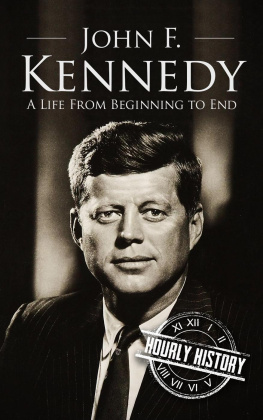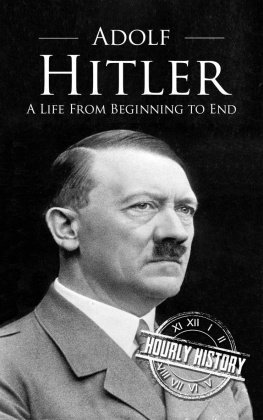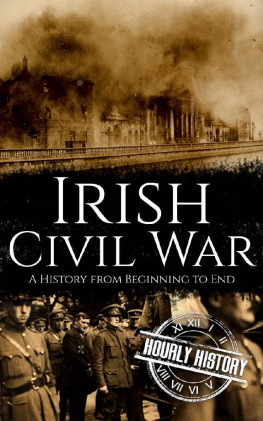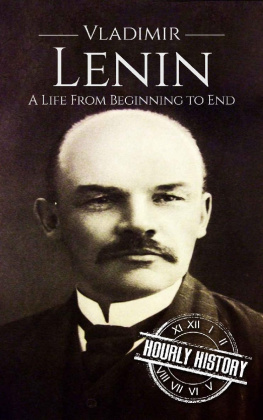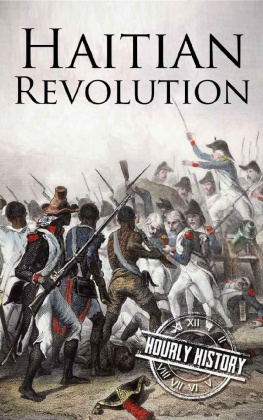Hourly History - World War II Leningrad: A History From Beginning to End (World War 2 Battles Book 6)
Here you can read online Hourly History - World War II Leningrad: A History From Beginning to End (World War 2 Battles Book 6) full text of the book (entire story) in english for free. Download pdf and epub, get meaning, cover and reviews about this ebook. year: 2017, publisher: Hourly History, genre: Non-fiction. Description of the work, (preface) as well as reviews are available. Best literature library LitArk.com created for fans of good reading and offers a wide selection of genres:
Romance novel
Science fiction
Adventure
Detective
Science
History
Home and family
Prose
Art
Politics
Computer
Non-fiction
Religion
Business
Children
Humor
Choose a favorite category and find really read worthwhile books. Enjoy immersion in the world of imagination, feel the emotions of the characters or learn something new for yourself, make an fascinating discovery.

- Book:World War II Leningrad: A History From Beginning to End (World War 2 Battles Book 6)
- Author:
- Publisher:Hourly History
- Genre:
- Year:2017
- Rating:4 / 5
- Favourites:Add to favourites
- Your mark:
- 80
- 1
- 2
- 3
- 4
- 5
World War II Leningrad: A History From Beginning to End (World War 2 Battles Book 6): summary, description and annotation
We offer to read an annotation, description, summary or preface (depends on what the author of the book "World War II Leningrad: A History From Beginning to End (World War 2 Battles Book 6)" wrote himself). If you haven't found the necessary information about the book — write in the comments, we will try to find it.
Hourly History: author's other books
Who wrote World War II Leningrad: A History From Beginning to End (World War 2 Battles Book 6)? Find out the surname, the name of the author of the book and a list of all author's works by series.
World War II Leningrad: A History From Beginning to End (World War 2 Battles Book 6) — read online for free the complete book (whole text) full work
Below is the text of the book, divided by pages. System saving the place of the last page read, allows you to conveniently read the book "World War II Leningrad: A History From Beginning to End (World War 2 Battles Book 6)" online for free, without having to search again every time where you left off. Put a bookmark, and you can go to the page where you finished reading at any time.
Font size:
Interval:
Bookmark:
Copyright 2017 by Hourly History.
All rights reserved.
Josef Stalin and Adolf Hitler are two of the most devastating men the human species has ever produced. They ruled in countries where questions about their fitness to lead could not be asked or, if they were asked, they were quickly quelled. Neither man had qualms about using the most brutal of methods to maintain control over their populations. When World War II brought the two titans into conflict, the consequences for the populations were catastrophic. Through battles, policies of extermination, and deliberate cruelty, Stalin and Hitler were the embodiment of evil.
But the Siege of Leningrad was a particularly unique form of agony for the citizens who endured it, those casualties of war whose misery was a result of the nature of war. The suffering experienced by the people of Leningrad during the 872 days when they were besieged by the German army takes its place in the grim annals of human misery. The people of Russia were already suffering under the tyranny of Josef Stalin. The Germany soldiers were victims of Hitlers determination to defeat Russia without factoring in the weather that would, in the end, prove to be a formidable foe. Hitler was convinced that victory would be swift and easy. The Russian winter had other plans.
Adolf Hitlers plans for conquering Russia revealed an ego which failed to account for the massive scale of the land upon which he unleashed Germanys military might. Leningrad, formerly St. Petersburg, had previously been the capital of Russia before the Soviet Union was formed. The city had been the symbolic center of the Russian Revolution that saw Lenin and his Bolsheviks bring down the Romanov Dynasty. The Bolsheviks replaced the tsar with communism and a system of government that was just dictatorial as it had been under the autocratic Romanovs.
The era of the 1930s was a time when the dark cloud of Nazism, communism, and fascism dominated the landscape. The nations where freedom still reigned were in the throes of a global economic crisis that demanded their full attention. They had no compassion or charity to spare for those belligerent countries where people who were poor, downtrodden, ethnically different, or in dissent would discover that disobedience was not tolerated. Leningrad was an influential city, once the jewel of Russia, but Stalin distrusted its people for their intellectual reputation.
Hitler, on the other hand, was disdainful of the Slavs and anticipated the opportunity to bring down the city that held such symbolic importance. Before the siege began, German scientists had conducted macabre calculations and were confident that the city would succumb to starvation within weeks. How, they reasoned, could a city populated by the Slavs, one that was encircled by the mighty German army, possibly hope to survive? That the survival of Leningrads citizens would include both a stolid refusal to surrender as well as, for some, cannibalism could not have been predicted at the start of the siege. That, in the end, the Slavs would outlast the Nazis was not seen in Hitlers crystal ball.
Leningrad was certainly a worthy target and not just as a symbol. In 1939, as Germany was flexing its muscle and on the threshold of beginning its conquest of Europe, Leningrad was responsible for 11 percent of the Soviet Unions industrial production. It was a center for arms factories and was the main base for Russias Baltic Fleet. Stalin knew all this and would not willingly relinquish the city, but he would shed no tears for the hellish fate that the citys people would endure.
Hitler knew that the city was more than just a symbol. But Hitler had his Third Reich, and he was confident that he would be the master of Europe; the despised Slavs would not stand in the way of Aryan dominance. Assured of his nations superiority in all things, Hitler reputedly printed invitations to a celebration in the Hotel Astoria of Leningrad to commemorate the triumph that he was sure would be his in conquering the city. There were stories that the Fuhrer would rename the city which had once been named for the dynamic Tsar Peter the Great after himself: Adolfsburg. But equally credible is the likelihood that he intended to destroy the city and give his Finnish allies the area north of the River Neva.
The overall plan to bring Russia to its knees, Operation Barbarossa, was ambitious. By the time the Siege of Leningrad ended on January 27, 1944after more than two yearsit would reign as historys longest and most destructive siege. In terms of the casualties suffered, it may also be the most costly siege of all time. Of the three million people who were inLeningrad at the start of the war, approximately one million died during the assault, generally from starvation and the terrible cold. That number is ten times higher than people killed when the atomic bomb fell on Hiroshima.
But the Germans were not the only cause of death during the war years. Josef Stalin, the cruel, calculating leader of the Soviet Union, tolerated no dissent and no rivals. Leningrad had suffered from Stalins paranoia before the siege began, and the city would suffer again when the siege ended. The irony of the Siege of Leningrad is that, because the city was shut off from Moscow and the rest of Russia with news of the terrible ordeal the citizens were enduring censored from the other parts of the country, Leningrad was isolated from the control of Russias malevolent leader. Suffering seemed to be the plight of the Russian people during the war and during Stalins reign of terror and no people suffered more than the people of Leningrad during the siege.
The truth about the Siege of Leningrad was not something that Stalin would allow to be disclosed, and it was not until glasnost opened up the archives that the Russian people could discover, for the first time, the abject depths of horror which the citizens of Leningrad endured. Surviving on a daily ration of bread that amounted to 125 grams, or the size of a cake of soap, the people of Leningrad were forced to be resourceful. The paste that was obtained from scraping wallpaper was eaten. Leather belts and briefcases were boiled down to make jelly. Pancakes were made out of face powder. According to historians, the people of Leningrad devised 22 different recipes with pigskin as an ingredient. Sweeping the attics and ventilation shafts at tobacco factories provided tobacco dust, an unlikely source of Vitamin B. Meanwhile, Vitamin C was extracted from pine needles.
But Leningrad under siege was a frightening place to live. Parents, fearful of the gangs that wandered the citys streets in search of ration cards to steal, kept their children inside when darkness fell. The city police, aware that the search for meat had made cannibalism a gruesome siege crime, created a division to investigate these incidents.
As grotesque as cannibalism was, all of Leningrad did not surrender to the depths of base behavior. In fact, there were times when the city rose to heights of nobility. Composer Dmitri Shostakovich was a citizen of Leningrad, and when the siege began, he was working on his Seventh Symphony, also known as the Leningrad Symphony. As he worked on the first three movements, he drew his inspiration from his rage at tyranny, inditing both Germany and Russia in his music. In August 1942, his orchestra, which like the rest of the city was weak and hungry, played to a packed concert hall. They played to the Germans as well; some of the loudspeakers were aimed at the Germans who encircled their city.
There were three million residents of Leningrad before the siege. By the time the siege was broken, the city had 700,000 residents, three-quarters of them women, still alive. So many dead cannot be silenced. Russia after the war was not a safe place for dissonant voices to be raised, but eventually, the stories of the dead would be told. History has a story to tell and a debt to pay, for only by telling the story can history absolve itself of its silence.
Font size:
Interval:
Bookmark:
Similar books «World War II Leningrad: A History From Beginning to End (World War 2 Battles Book 6)»
Look at similar books to World War II Leningrad: A History From Beginning to End (World War 2 Battles Book 6). We have selected literature similar in name and meaning in the hope of providing readers with more options to find new, interesting, not yet read works.
Discussion, reviews of the book World War II Leningrad: A History From Beginning to End (World War 2 Battles Book 6) and just readers' own opinions. Leave your comments, write what you think about the work, its meaning or the main characters. Specify what exactly you liked and what you didn't like, and why you think so.

